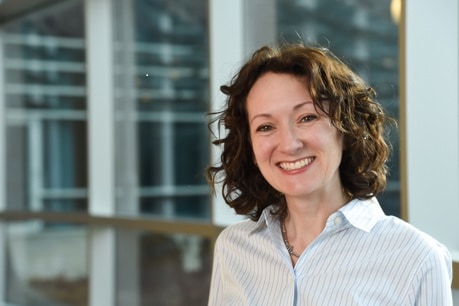Throughout the world, 40% to 50% of people with diabetes will develop diabetes-related kidney disease. Timely detection is critical to preventing disease progression and reducing associated risks. “The American Diabetes Association recommends estimating glomerular filtration rate (GFR) at the time of a type 2 diabetes diagnosis and annually thereafter,” says Annemarie G. Hirsch, PhD, MPH. “However, at the time of a diabetes diagnosis, up to one-third of individuals already have evidence of kidney disease.”
Community socioeconomic deprivation (CSD) is a multidimensional measure of community-level socioeconomic characteristics that has been linked to the onset of type 2 diabetes (T2D) as well as poor kidney health. The stress of living in a socioeconomically deprived area may increase risks for diabetes and kidney impairment, but the presence of kidney disease at diagnosis may also indicate delays in the detection of T2D (Figure).
Knowledge of Risk Factors Can Inform Future Programs
For a study published in SSM Population Health, Dr. Hirsch and colleagues sought to determine the proportion of people with hyperfiltration and reduced GFR at the time of a T2D diagnosis and evaluated associations between CSD, community type, and kidney outcomes. “We wanted to identify individual- and community-level risk factors for poor kidney health at the time that T2D was detected,” Dr. Hirsch. “Knowledge of these risk factors is critical to informing targeted programs that promote kidney health and prevent disease progression among those at highest risk.”
Using EHR data, the investigators evaluated GFR at the time of a T2D diagnosis in 13,144 adults and the closest estimated GFR (eGFR) measurement at 1 year before and 2 weeks after diagnosis. Adjusted multinomial regression models were used to estimate associations of CSD and community type with eGFR. The authors also explored whether community features were linked to an absence of diabetes screening in the years prior to a diagnosis.
CSD Increases Likelihood of Reduced Kidney Function
According to the findings, more than 20% of CSD patients had hyperfiltration or reduced eGFR at T2D diagnosis, with 9.7% having hyperfiltration and 10.5% having reduced eGFR. People living in socioeconomically deprived communities and in cities were more likely to have reduced eGFR at T2D diagnosis than those living in less deprived and rural communities. Those living in the most deprived communities were more than 30% more likely to have reduced eGFR. “Our findings suggest that kidney health at time of T2D detection is related to more than clinical factors,” says Dr. Hirsch.
The study identified other factors that were associated with key clinical outcomes in patients who were newly diagnosed with diabetes. “Women, individuals with lower socioeconomic status, and people who lived in socioeconomically deprived communities and in urban communities were at a greater risk of reduced kidney function at the time of type 2 diabetes detection,” Dr. Hirsch says.
Consider Clinical & Social Factors in Screening & Monitoring
According to Dr. Hirsch, the study adds to the growing body of literature that supports the need for clinicians to incorporate social determinants of health into the delivery of care. “These data demonstrate that, at the time when T2D is first detected, kidney health varies in relation to social risk factors, including the socioeconomic status of the communities in which patients live and manage their health,” she says. “Thus, screening and monitoring of kidney health may be guided by not only clinical factors but also by social risk factors that are associated with poor kidney outcomes.”
Of note, Dr. Hirsch says more research is warranted to better elucidate the findings. “It may be beneficial to evaluate the impact of earlier and more geographically targeted screening for T2D and other risk factors of poor kidney outcomes among subgroups,” she says. “These subgroups include those at greater risk for the presence of hyperfiltration and reduced GFR at the time of a T2D diagnosis.”


 Rebecca Shover
Rebecca Shover